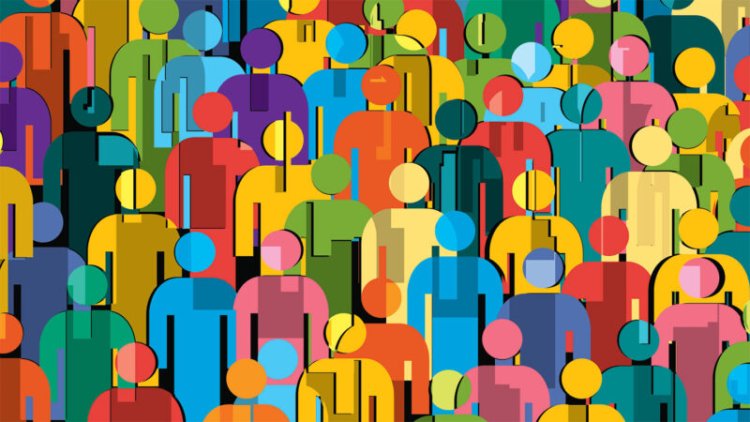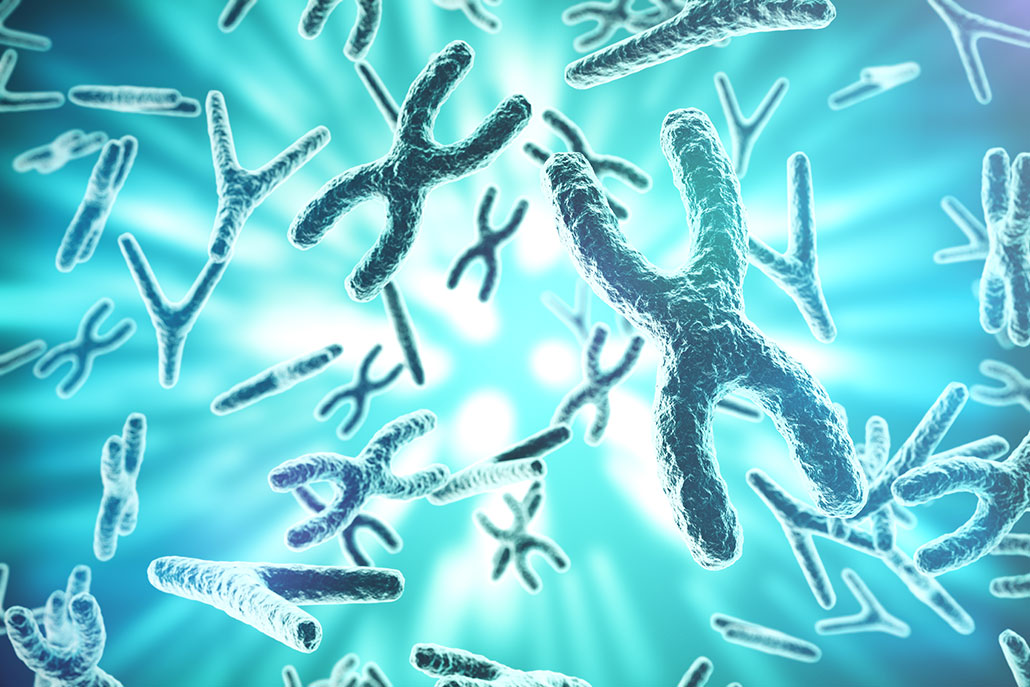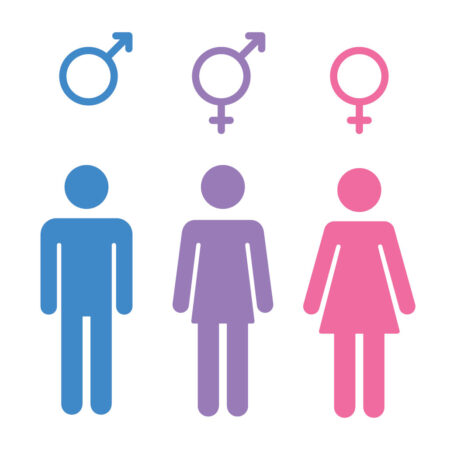Common high-school textbooks promote unscientific views on gender
Inaccurate descriptions of sex and gender may lead to sexism or prejudice toward people who don’t seem to represent gender norms.

Major textbooks used by most introductory biology classes in U.S. high schools contain overly simplistic — and misleading — language when describing sex and gender. That’s the finding of a new study.
The study authors worry that such faulty teaching may be used to justify sexism or prejudice against certain segments of society.
Brian Donovan is an education researcher at BSCS Science Learning. It’s in Colorado Springs, Colo. The center develops materials for classrooms and teachers. It also evaluates how science and technology are taught. Donovan’s team looked at six widely used high-school biology textbooks. Nationwide, about two out of every three intro classes in biology use one of these texts.
The researchers scoured each book, looking for passages that dealt with biological sex and gender. In all, they found 362 paragraphs in genetics chapters that dealt with these topics. And in each book, at least some passages erred in how they described sex or gender. The study also turned up problems with how the books taught about traits linked to genes.
The researchers shared their findings February 24 in Science.
The impact of textbooks
How such topics are presented can affect students’ beliefs about who’s good at science, Donovan has found. Back in 2019, his team randomly assigned 460 eighth to tenth graders to read one of three genetics passages. The readings differed in how they described what role genes play in differences between sexes. Later, the team surveyed these kids about why they think some people are good at science.
Some of the readings gave an oversimplified version of how genes determine differences between sexes. For example, they described basic genetic differences between men and women based on X- and Y-chromosomes. Students who read these passages were more likely to think that someone’s academic ability was set by genes, too. Such thinking could lead to false beliefs that males and females have different abilities in some fields. This includes success in STEM fields: science, technology, engineering and math.

What’s more, these ideas seemed to affect girls’ views about themselves. Many of those who read the overly simplistic lessons showed less interest in pursuing careers in science-related fields, compared with girls who had gotten other information.
These results are important because gender stereotypes start young. Sexist attitudes about how smart someone is — including oneself — can begin by first grade. A limited understanding of biology might support those attitudes. And it could help explain why fewer women seek careers in science and engineering.
Either/or traits are rare
The researchers found that the textbooks tended to focus on so-called “either/or” traits. These are discrete traits that you either have or you don’t. But such traits are actually rare. Some textbooks describe being able to roll your tongue as a discrete trait. It’s not. Some of us can roll our tongues a lot. Others can barely do it. The rest fall somewhere in between.
Most traits vary like this. They reflect the impacts of many different genes, says Donovan — and how those genes interact with the environment.
Height is one example. Genes can generally influence how tall we get. But so does the environment. Someone who had good health and a good diet throughout childhood will tend to grow taller than those who lacked one or both.
Sex can vary across a spectrum, too. But some textbooks present it as a discrete trait: male or female.
Doctors assign sex at birth based on visible genitals. Most people are labeled as female if they have a vulva, or male if they have testes and a penis. But there are also millions of people whose bodies are not strictly male or female. These people are referred to as being intersex. There was no mention of intersex individuals in any of the books reviewed for the new study.
A mixture of genetics and the environment can influence people’s traits. For instance, exposure in utero to some foods and pollutants can mimic sex hormones. That can affect whether people (and animals) develop certain feminine or masculine features.
Genetics is not the sole basis of gender
Females usually have two X-chromosomes; males usually have an X- and a Y-chromosome. However, chromosomes and genitals do not set our gender. Gender is different than sex, points out Catherine Riegle-Crumb. She is a sociologist at the University of Texas at Austin and one of the new study’s authors. A transgender male, for example, might have two X-chromosomes, but his gender is still male.
“Gender has to do with our beliefs and ideas about males and females,” explains Riegle-Crumb. We inherit gender from our culture. What is considered normal behavior and preferences for males, females or nonbinary people varies between cultures. It also can change over time.
These expectations — called gender norms — affect how society treats people. And it starts even before a baby is born. (Think “gender reveal” parties: pink for females, blue for males.)
Yet in the new study, none of the 362 paragraphs on such topics described the difference between sex and gender. And if students don’t learn the difference, Riegle-Crumb worries, they may assume gender differences are due to sex. It can also make it harder for students to accept transgender people, whose gender doesn’t match the sex they were assigned at birth.
Assumptions could lead students to use genes to explain other differences they see, too. For example, social differences. Why aren’t there more women leaders? The answer is not found in their genes. Still, students may think it is.
Do you have a science question? We can help!
Submit your question here, and we might answer it an upcoming issue of Science News Explores
The studied books also left out the many ways men and women are similar, Riegle-Crumb notes. Nor did they describe the normal range of differences between people within a group. For example, some men have more feminine features. Some women have more masculine ones.
The books focused instead on the traits women tend to share with women, or men with men. This gives the impression that all women are kind of the same (and so are men).
These books explained differences between people largely on the basis of genes. They gave gene-based reasons 12 times as often as external-factor reasons. External factors include what society expects of us or how our genes may interact with the environment. In fact, genes alone don’t explain most differences between people, Donovan’s team points out.
Nowhere did the books write that genders have different STEM abilities. But kids can come to that false conclusion, Donovan says. It’s something his team saw in its 2019 study.
Unscientific beliefs linked to prejudice
The new study’s findings are important — but not surprising, says Zach Schudson. He’s a social psychologist at California State University in Sacramento. He did not take part in the new work. But he does study how beliefs about gender and our bodies can affect how we view ourselves and others.
Says Schudson, the first time most of his students hear about intersex people is in a college class. The new study, he says, helps explain why. Not recognizing that many people won’t fit squarely into a male or female category can lead to prejudice against those who seem different from norms, he says.
These beliefs also can affect someone’s views on gender equality. One 2018 study, for instance, showed that people who believe men and women have distinct capabilities based on their genes were less likely to support equal pay for women. People with such beliefs also may question whether women should be leaders, says Riegle-Crumb.
One way to combat unscientific messaging is call it out, says Riegle-Crumb. People naturally exhibit a diverse range of traits. Don’t try to fit everyone into a few simple boxes. Instead, she suggests, notice both the many traits people share and the ways we differ.
What's Your Reaction?













![[Computex] The new be quiet cooling!](https://technetspot.com/uploads/images/202406/image_100x75_6664d1b926e0f.jpg)








